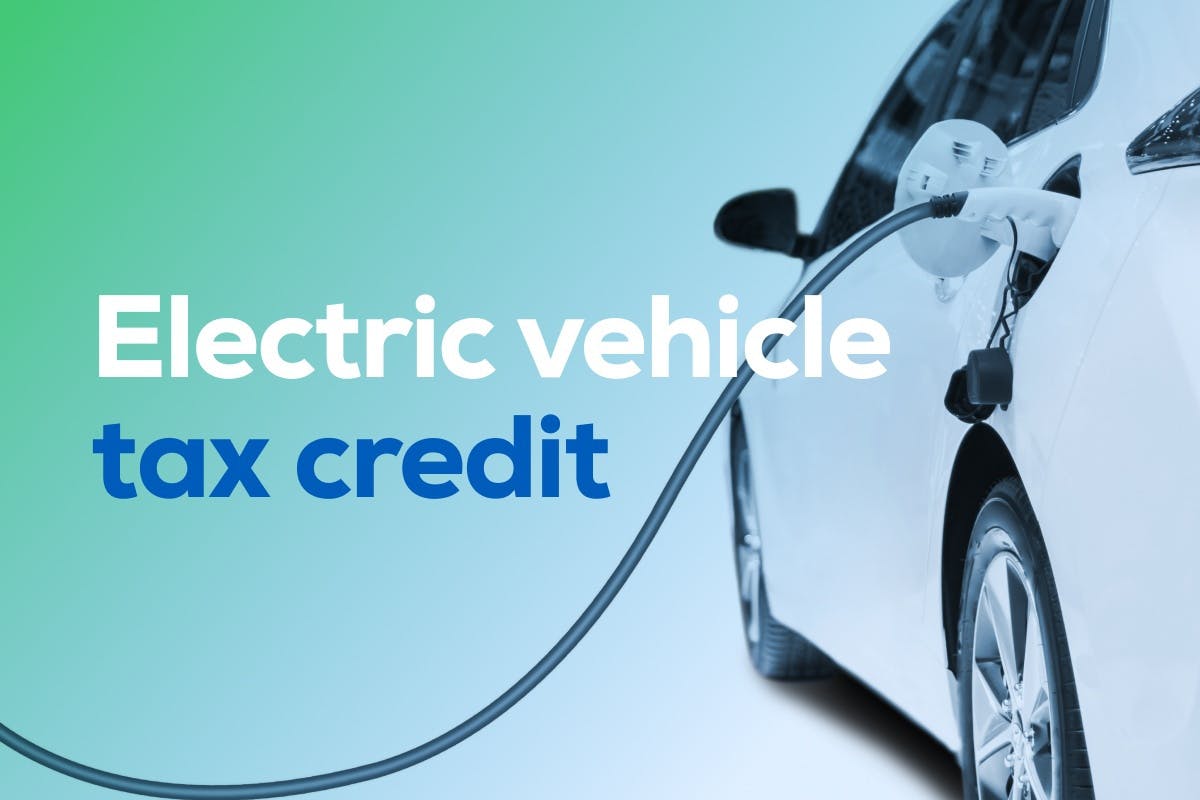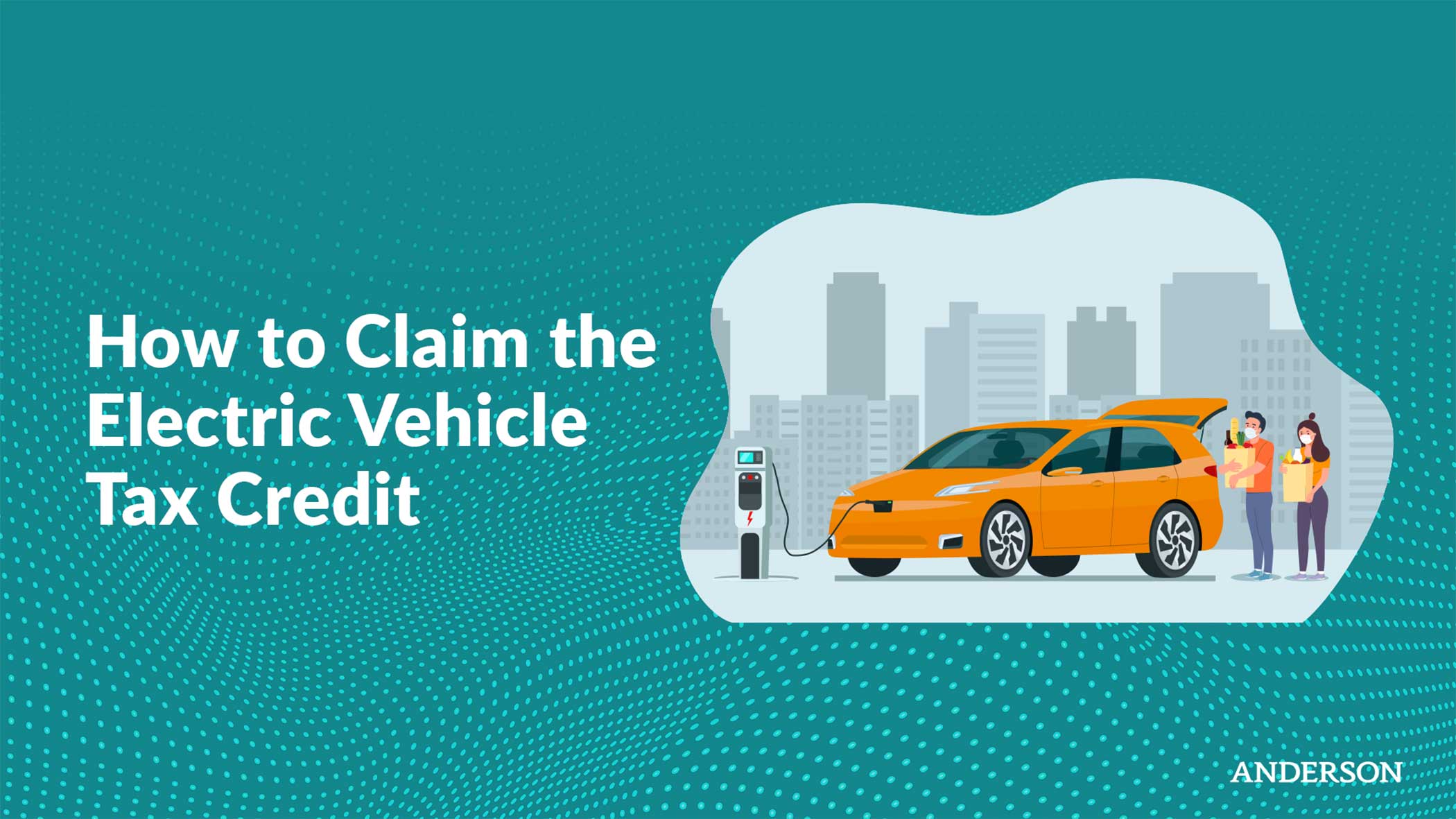Immerse yourself into the electrifying world of EVs as we power up your knowledge with our comprehensive guide on electric vehicle tax credits. We’ll charge through the complexities, giving you a major boost in understanding how these incentives spark financial benefits for the eco-friendly motorist. Ready to plug into savings and drive your budget further down the road? Let’s hit the gas —or rather, the accelerator— and get started.
Understanding Electric Vehicle Tax Credits

For those stepping into the realm of electric vehicles (EVs), one can’t overlook the prevalent incentive known as Electric Vehicle Tax Credits. Whisk away any image of a coupon clipping exercise! It’s not a discount on the sales price or a straight-up cash rebate but a federal income tax credit that can offset your tax bill.
These tax credits are part of a larger strategy implemented by the federal government to spur adoption of electric and plug-in hybrid vehicles. As part of the Energy Improvement and Extension Act of 2008 and later tweakings, the government started waving around significant tax credits to prospective EV owners. The credits can range from $2,500 to $7,500, with the actual amount correlated to the energy capacity of the vehicle’s battery. Simply put, the bigger the battery, the larger the credit.
One of the enticing bait in the EV tax credit arrangement is its flexibility. How? Provided you owe enough in income taxes, the credits can be utilized all at once in the year you purchase your EV. If the credit, say $7,500, is higher than your total tax bill, you wouldn’t get a refund for the difference. It’s essentially a use-it-or-lose-it deal, not a cash back offer.
However, they weren’t designed to be infinite. There’s a provision, often referred to as the “200,000 cap”, which triggers a phase-out period once a manufacturer sells 200,000 eligible vehicles in the United States. This means the full credit is available until that manufacturer hits the 200,000-vehicle mark. Post this threshold, the credit value starts reducing over a year until it bid adieu completely.
Now, in my book, that’s a clever piece of planning. It’s like the government saying – “We’ll offer you a sweet incentive for jumping onto the electric bandwagon, but we don’t want to be carrying early adopters forever.” It lays down the pathway for electric vehicle penetration while letting the market gradually stand on its own.
In short, the Electric Vehicle Tax Credits are a government-provided push to ease the electric transition, with benefits reaped at the tax-time, but they come with their own set of rules and limits to become a self-sustaining reality sooner rather than later.
Qualification Criteria for Electric Vehicle Tax Credits
To qualify for electric vehicle tax credits, you must follow certain stipulations set forth by the U.S. government. Brace yourself, it’s a bit like sorting through a bowl of spaghetti.
Firstly, the vehicle must be brand new. In the same breath, it must also be an electric vehicle (EV)—either full-electric or plug-in hybrids (PHEVs). But hey, if the car you’re squinting at is powered by diesel, gasoline, or fairy dust, it doesn’t make the cut. Only cars that derive their vroom vroom from electrons can join this party.
Next up, we’ve got the battery impediment. Your new EV must have a battery with at least 4 kilowatt-hours of capacity. The logic behind this, presumably, is that Uncle Sam wants to incentivize serious electric motors, not glorified golf carts. On the plus side, a larger battery capacity often results in a larger credit. It’s a win-win.
Then there’s the plot twist. The EV tax credits are phased out for each carmaker once they’ve sold 200,000 eligible vehicles in the U.S. Why? Well, the exposure time of the tax credit was designed to drive EV sales until they could find their feet in the marketplace. It wasn’t designed as a permanent leg up. Different manufacturers hit this cap at different times, so it’s worth doing some sleuthing before you buy.
One more thing while we’re eating this bowl of spaghetti–these tax credits aren’t refunds. They offset what you owe the IRS. So, if you owe less in taxes than the credit amount, you won’t get back the balance. At the end of the day, you score a shiny new EV or PHEV and the potential to keep some nice greenbacks in your pocket come tax time.
How to Apply for Electric Vehicle Tax Credits

Securing your slice of the proverbial electro-economic pie involves a bit of paperwork, but nothing that should overwhelm anyone who’s ever grappled with the beast known as the U.S income tax return. To apply for the Electric Vehicle Tax Credit, you need to file IRS Form 8936, “Qualified Plug-in Electric Drive Motor Vehicle Credit.” It sounds like an algorithm from a 1950s sci-fi thriller, but we assure you it is much less threatening.
Form 8936 will ask you for some details specific to your vehicle, such as the make, model, and year, as well as the date you put it into service. It’s your EV’s birthday, the day you started using it—again, making it more tangible than simply jotting down ‘purchase date’. Form 8936 also inquires about the vehicle’s battery capacity (because the amount of credit depends on this), and whether it’s for personal or business use.
Navigate the form with your most detail-oriented mindset. Following the instructions, you’ll first compute your tentatively allowed credit for all qualified vehicles. Here you’ll dapple with figures like the battery capacity and its proportionate credit. Remember that the maximum credit cannot exceed $7,500, regardless of how star-studded your garage looks.
Seek collaboration if needed. Remember, there’s no shame in reaching out for help, especially when tax supremacy is on the line. Your tax professional or software will provide guidance on how to incorporate the credit in your tax return.
In the scenario where the credit exceeds your tax bill, get ready for some good news with a berry on top. The Electric Vehicle Tax Credit is non-refundable but carries forward. So, any excess could be applied to next year’s return.
If you’re leveraging the credit for a business fleet of EVs, weave it into your general business tax credit, using Form 3800, “General Business Credit.” All businesses should take advantage of this as it could translate to a significant reduction in tax liability.
In conclusion, filing for electric vehicle tax credits is as straightforward as it is rewarding. Abide by the IRS form 8936, tick all the correct boxes, make your claim, and let Uncle Sam reward you for your environmentally-friendly choice!
International Comparison of Electric Vehicle Tax Credits

Internationally, electric vehicle tax credits work a bit differently than your cup of joe at the neighborhood café. You see, every country has their own distinct flavor when it comes to encouraging the switch to electric. Down under in Australia, they don’t provide any federal tax credit for EVs. Surprising, right? However, you shouldn’t despair if you’ve got your heart set on taking an EV on a trip down under. Certain states offer hefty incentives like registration rebates or significant discounts on stamp duty.
Now, let’s hop on over to Europe where electric vehicle enticements are as diverse as the region’s culture. In the Nordic wonderland Norway, generous incentives have supercharged EV adoption—even without an actual tax credit. Instead, they’ve waived import taxes, offer free public parking, electric vehicle toll exemptions, and allow EVs in bus lanes. Not too shabby, right?
On the other side, Germany provides a substantial federal incentive of up to €9,000 ($10,847 US dollars, for those dollar folks among you), split between the government and manufacturers on 100 percent zero-emission vehicles. Meanwhile, the UK ropes in buyers with a grant, reducing the cost of brand new, low-emission vehicles up to a maximum of £2,500.
Crossing the Atlantic, over to the land of Maple Syrup and Ice Hockey, Canada offers resident Canucks a federal tax credit up to $5,000 CAD on eligible EVs. Plus, certain provinces like British Columbia and Quebec, offer additional rebates.
To wrap up this global tour, let’s take a cable car ride across to the US. Over here, Uncle Sam provides up to $7,500 on new, eligible EVs. However, this doesn’t last forever. This credit begins to shrink once an automaker sells 200,000 eligible vehicles. So if you’re counting on this deduction, make sure your desired vehicle hasn’t crossed the threshold.
Overall, the world takes a pick-and-mix approach to electric vehicle tax credits. They can range from significant monetary incentives to less tangible benefits like priority vehicle registration or exemption from certain taxes. The key takeaway here is— research before buying, savvy EV shoppers! Depending on your locale, you could cruise into a generous government deal or be left out in the cold.
Benefits of Electric Vehicle Tax Credits
Siphon off the static noise about electric vehicles for a moment, and get this key nugget of information into your cranium: Electric Vehicle (EV) Tax Credits, as dull as they may sound, are essentially working out a slick way to get Uncle Sam to subsidize your cool new car. Now, doesn’t that suddenly sound a lot more appealing?
There are straightforward benefits of EV tax credits that we could rap about like cost reduction and combatting climate change. Indeed, these financial incentives effectively slim down the price tag of electric vehicles, dissolving that bitter pill of high upfront cost one swallows when buying green. It’s like landing a great deal on Black Friday, but without the fracas of shoving your way through rabid crowds – win, win!
Additionally, these tax credits indirectly cultivate a culture of eco-conscious transport choices. The more people swapping exhaust-belching clunkers for sleek, green machines, the closer we inch towards our collective goal of reducing our carbon footprint. We can think of it like herd immunity for the environment – the more of us get on the EV bandwagon, the healthier our planet gets.
Indeed, electric cars are to roads what salad is to buffets – the environmentally friendly option. Nevertheless, it’s not always only about hugging trees. The EV grassroots shifts don’t stop at cost reduction and CO2 emissions. It’s also about promulgating technology advancements. The increase in demand for EVs, stoked by these tax credits, drives continued innovation and technological improvements.
The more EVs we have out there, the more putty-like the technology becomes, reshaping and improving through research and development. We’d see better batteries, enhanced range efficiencies and slicker design, all refining that EV experience. Equivalently, the more we demand salads, the tastier and more innovative they get – think quinoa, kale, and whatever superfood the hipsters are parading these days.
To sum it up; the benefits of EV tax credits are abundant, reaching far beyond just dollars. It’s a synergistic push towards greener transportation, agile technology advancements, and hey, a lighter wallet. So, the next time you see one of these high-tech chariots whizzing by you noiselessly, remember, it’s not just a car; it’s a symbol of a greener future.
FAQs
What exactly is the electric vehicle tax credit?
Who is eligible for this tax credit?
How can I claim this enigmatic electric car tax credit?
Conclusion
This guide functions as a comprehensive roadmap highlighting the incentives of stepping into the future of transportation. The complexity surrounding electric vehicle tax credits is thereby demystified, helping you make an informed decision. Remember, aside from the incentives, by adopting electric, you’re also contributing to the eco-friendly revolution. It’s a choice that combines cost-efficiency, advanced technology, and environmental consciousness. A win-win for all!
